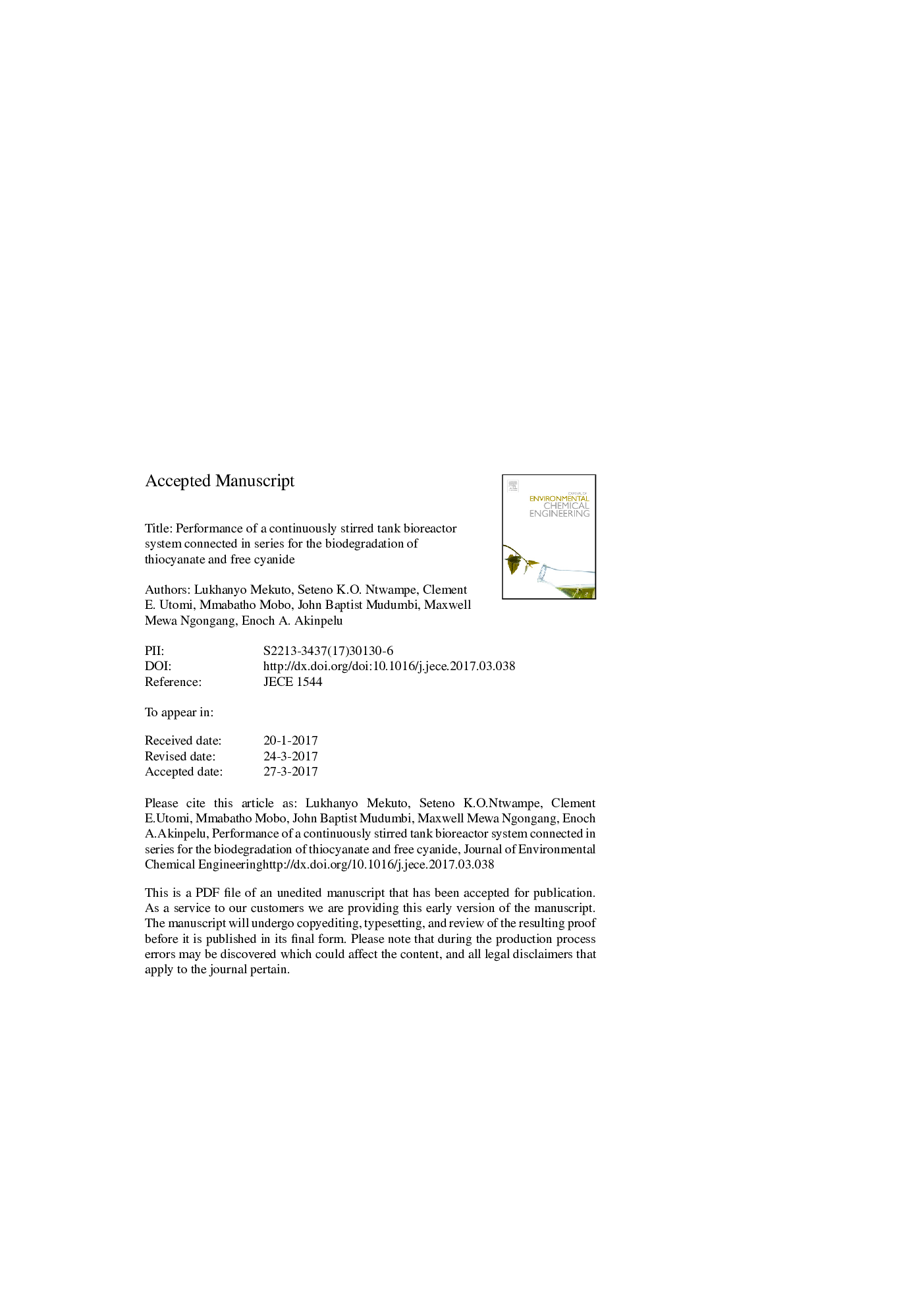| Article ID | Journal | Published Year | Pages | File Type |
|---|---|---|---|---|
| 4908532 | Journal of Environmental Chemical Engineering | 2017 | 24 Pages |
Abstract
A microbial consortium which was largely dominated by Thiobacillus sp. and Serratia sp. was evaluated for the biodegradation of thiocyanate (SCNâ) and free cyanide (CNâ) under neutral to alkaline conditions, in a two-staged stirred tank bioreactor system operated in series. The bioreactors were operated across a range of residence times (7 d to 24 h), SCNâ (100-1000 mg SCNâ/L) and CNâ (200-450 mg CNâ/L) concentrations at room temperature (21-25 °C). The bioreactors were characterised by high SCNâ degradation efficiencies (>99.9%) throughout the experimental run except when the microorganisms were temporarily shocked by a pH increase and the introduction of CNâ within the system. Similarly, high CNâ biodegradation efficiencies (>99.9%) were observed subsequent to its introduction to the system. Planktonic microbial activity tests by organisms within the bioreactor system revealed high SCNâ and CNâ degradation efficiencies (>80%); a direct indication of high planktonic microbial activity within the bioreactor system. Furthermore, there was an observed total nitrogen removal by the organisms within the system, which demonstrated the nitrification and denitrification capacity of the organisms while the sulphate concentration increased as a result of SCNâ biodegradation, over a period of approximately 300 days. This is the first report on the simultaneous biodegradation of high CNâ and SCNâ concentrations, coupled with nitrogen removal under alkaline conditions. The results demonstrated the potential of the process to treat CNâ and SCNâ laden wastewaters.
Related Topics
Physical Sciences and Engineering
Chemical Engineering
Chemical Engineering (General)
Authors
Lukhanyo Mekuto, Seteno K.O. Ntwampe, Clement E. Utomi, Mmabatho Mobo, John Baptist Mudumbi, Maxwell Mewa Ngongang, Enoch A. Akinpelu,
